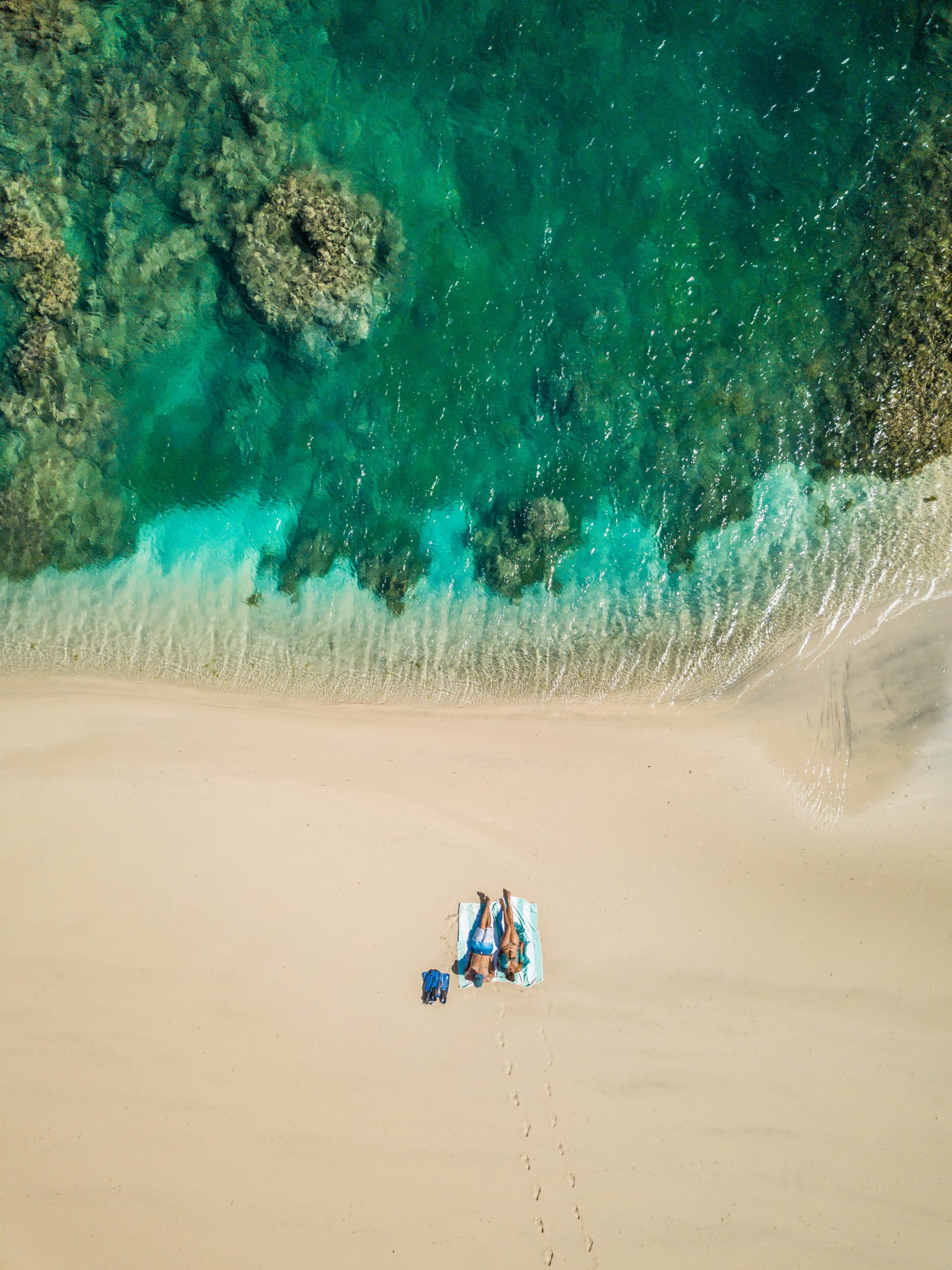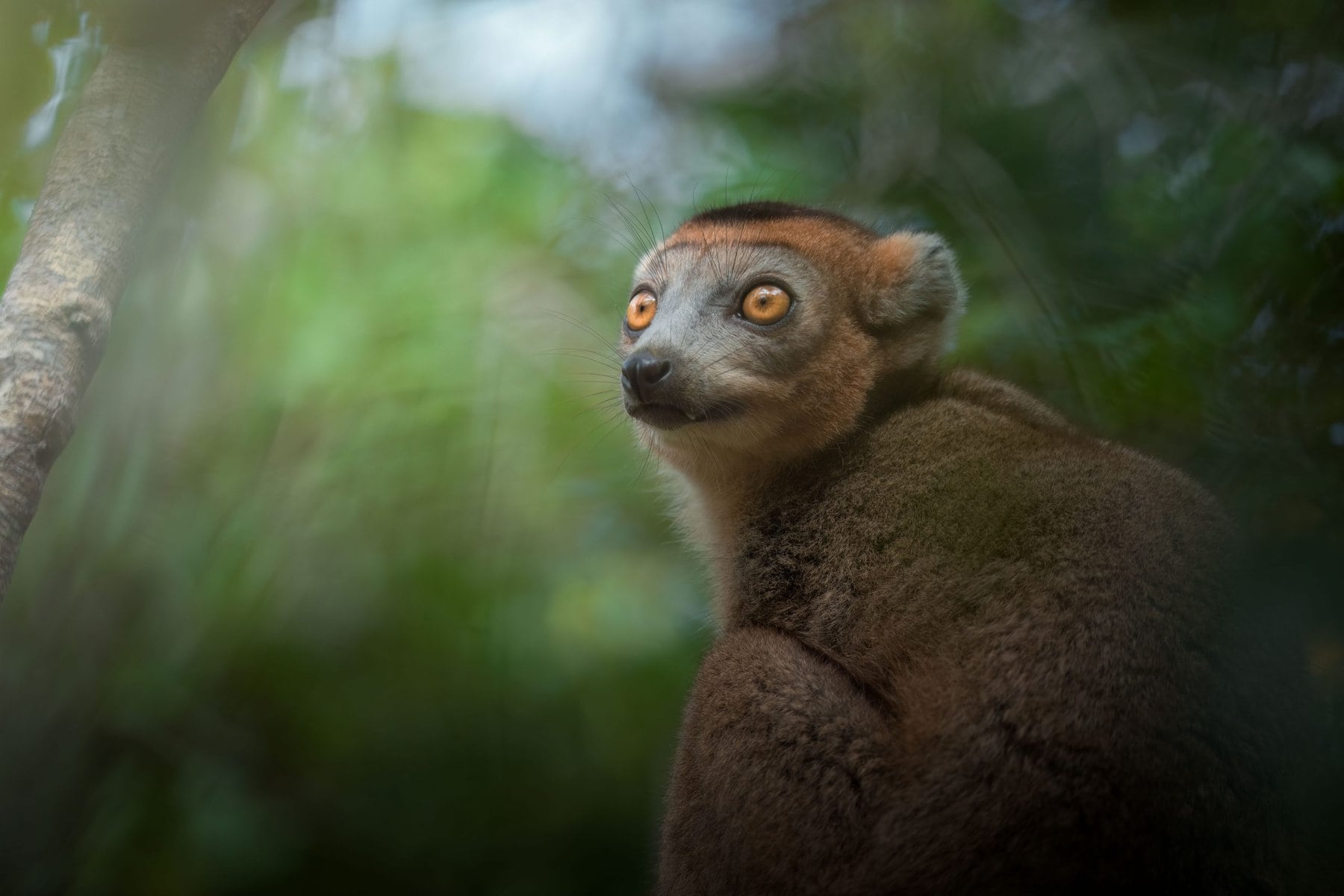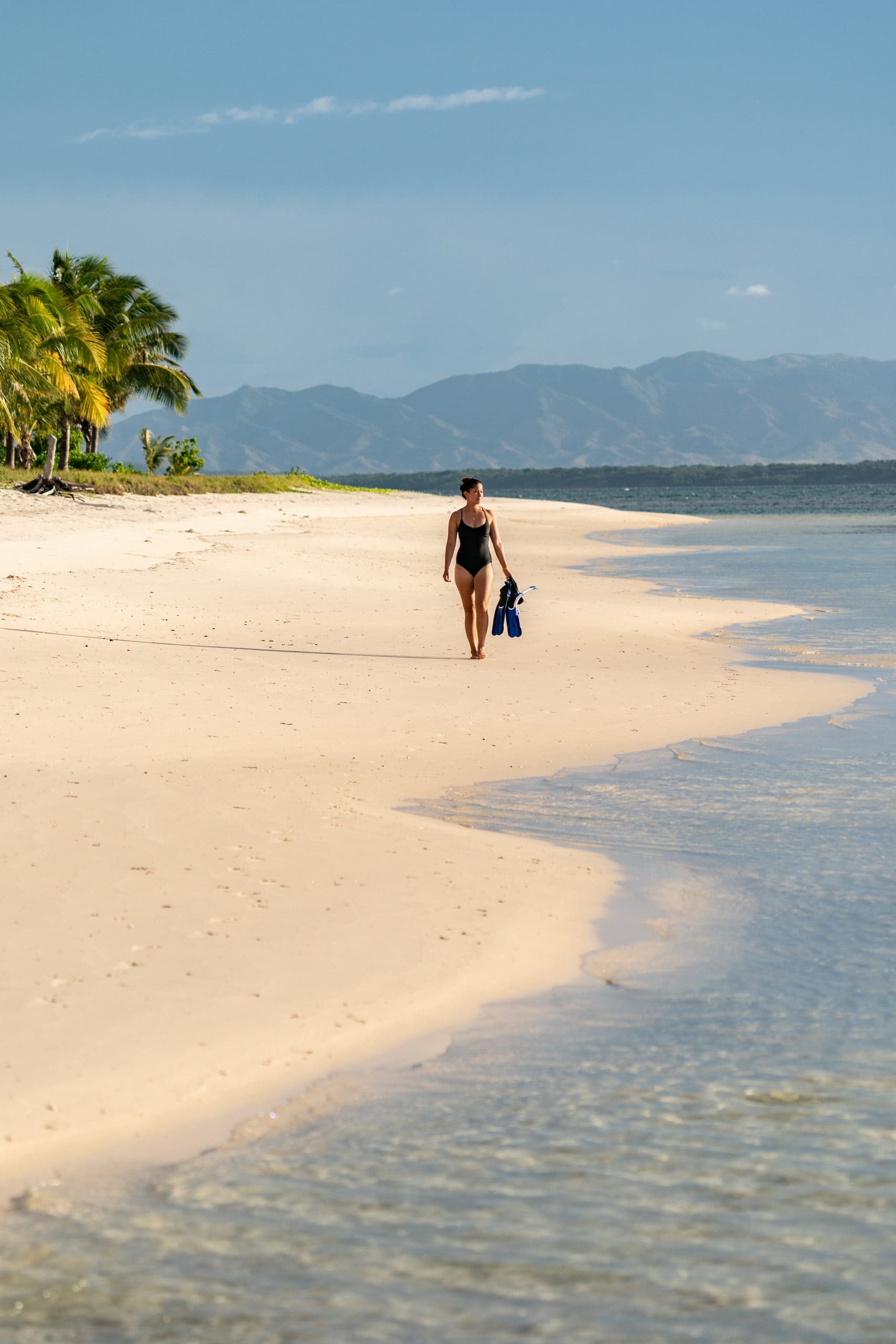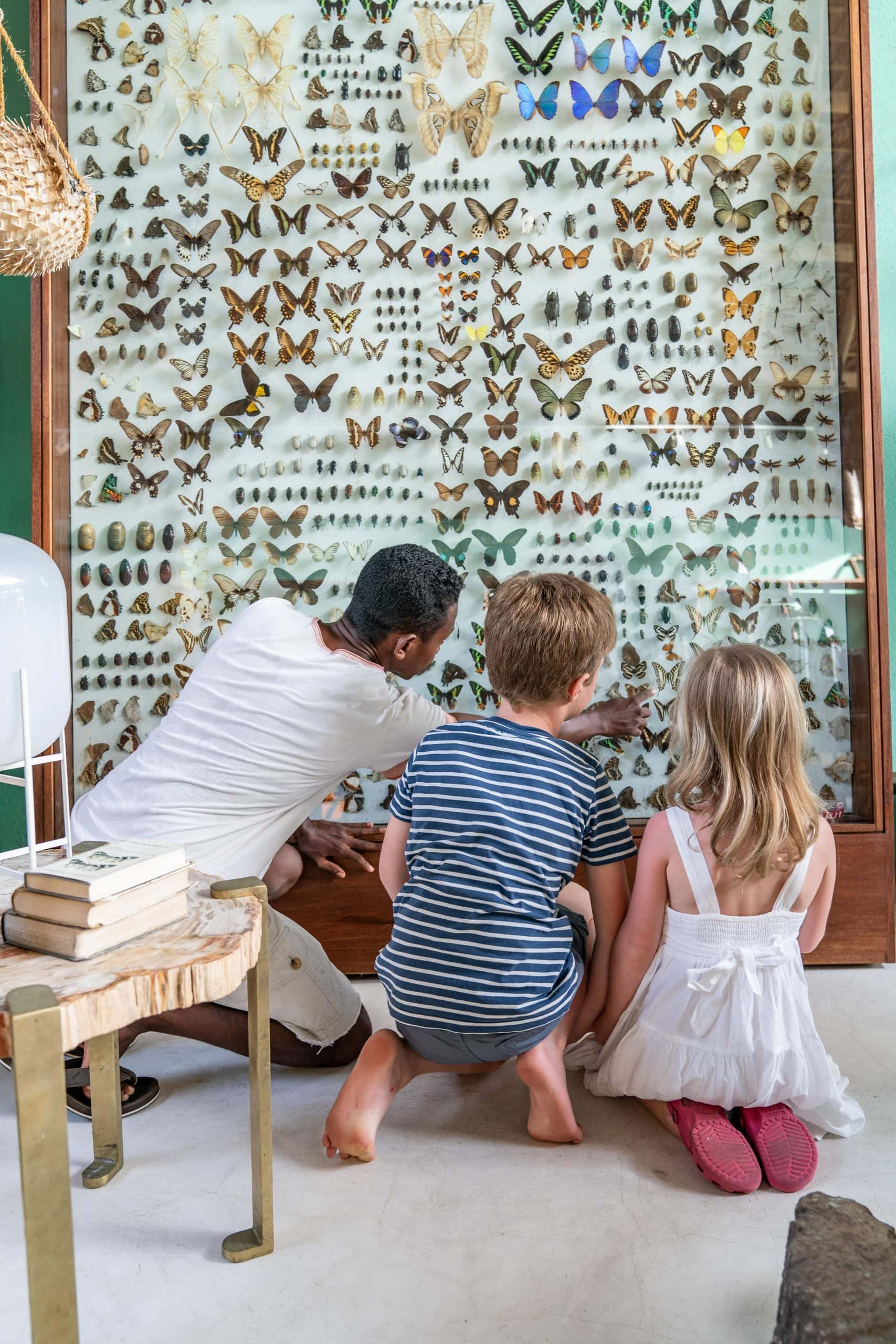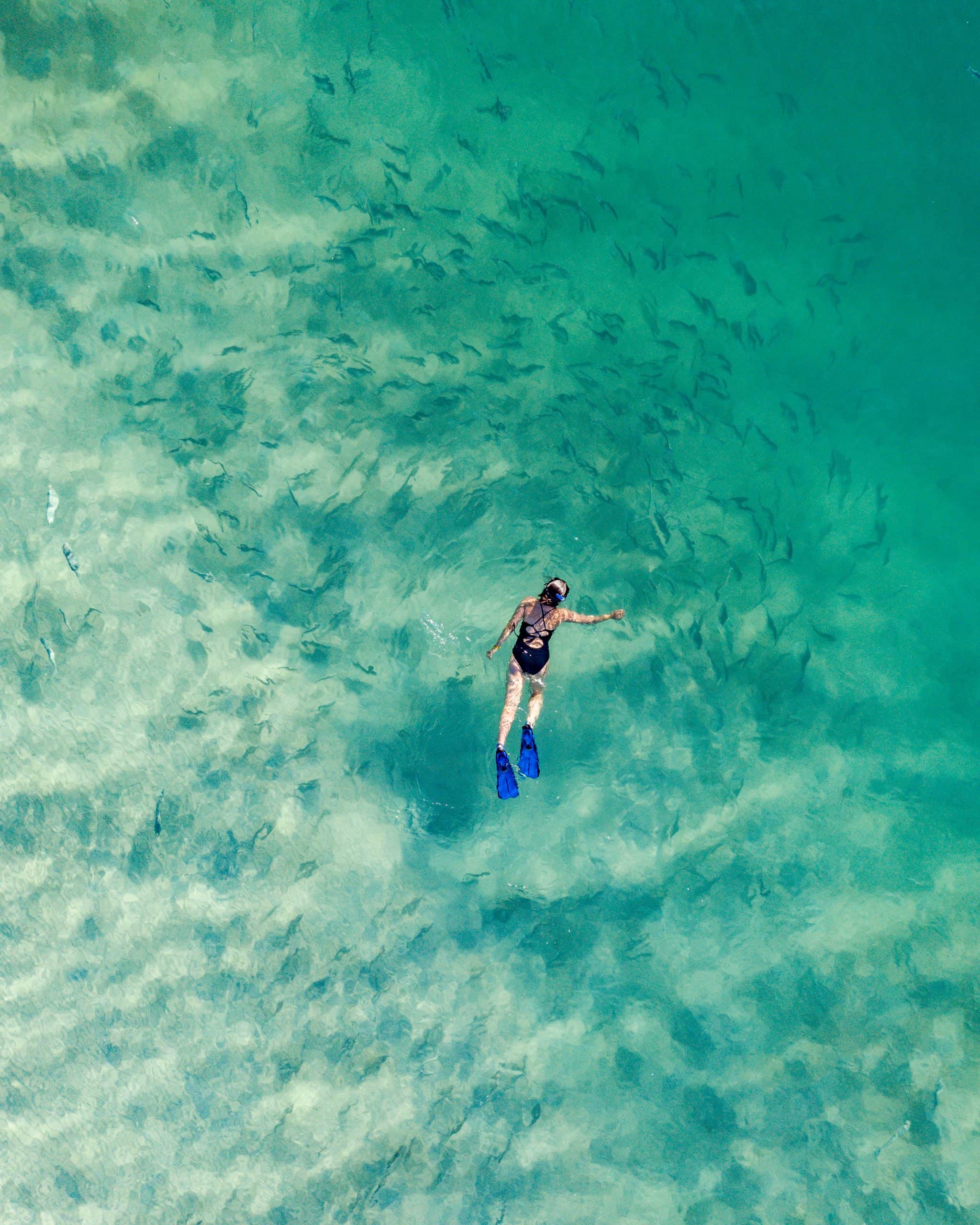Enchanting creatures of our forests
Madagascar, an island brimming with unique biodiversity, holds a treasure trove of fascinating species. Among these, Crowned Lemurs reign as captivating creatures, found exclusively in the northeastern forests of this magical island. Their distinct appearance, social dynamics, and ecological importance make them a subject of significant interest to wildlife enthusiasts and travellers visiting Miavana.
Our Crowned Lemur family has grown some more
At the end of April 2023, an additional 8 Crowned Lemurs, including 5 females and 3 males, were translocated through the efforts of Time + Tide Foundation from the Bekaraoka forest (in close proximity to the village of Amparihirano) to Miavana. Ever since, our conservation team on the island have been monitoring the Lemurs, having reported that the newest family members have adjusted to their protected sanctuary, brilliantly. Many pairs have formed, which is an encouraging sign for the genetic diversification and long-term survival of these endangered species.
The forest surrounding Miavana is now home to a total of 15 of these magnificent creatures, and guests staying with us have the opportunity to join a guided walk to witness them in their natural habitat as they forage for fruit in the canopy, leap through the tangle of branches, groom themselves and socialise with one another — an experience not to be missed. Enjoy reading on as we delve into the details about these endangered species from their crown-like tufts and how they communicate to their contribution to the ecosystem through foraging.
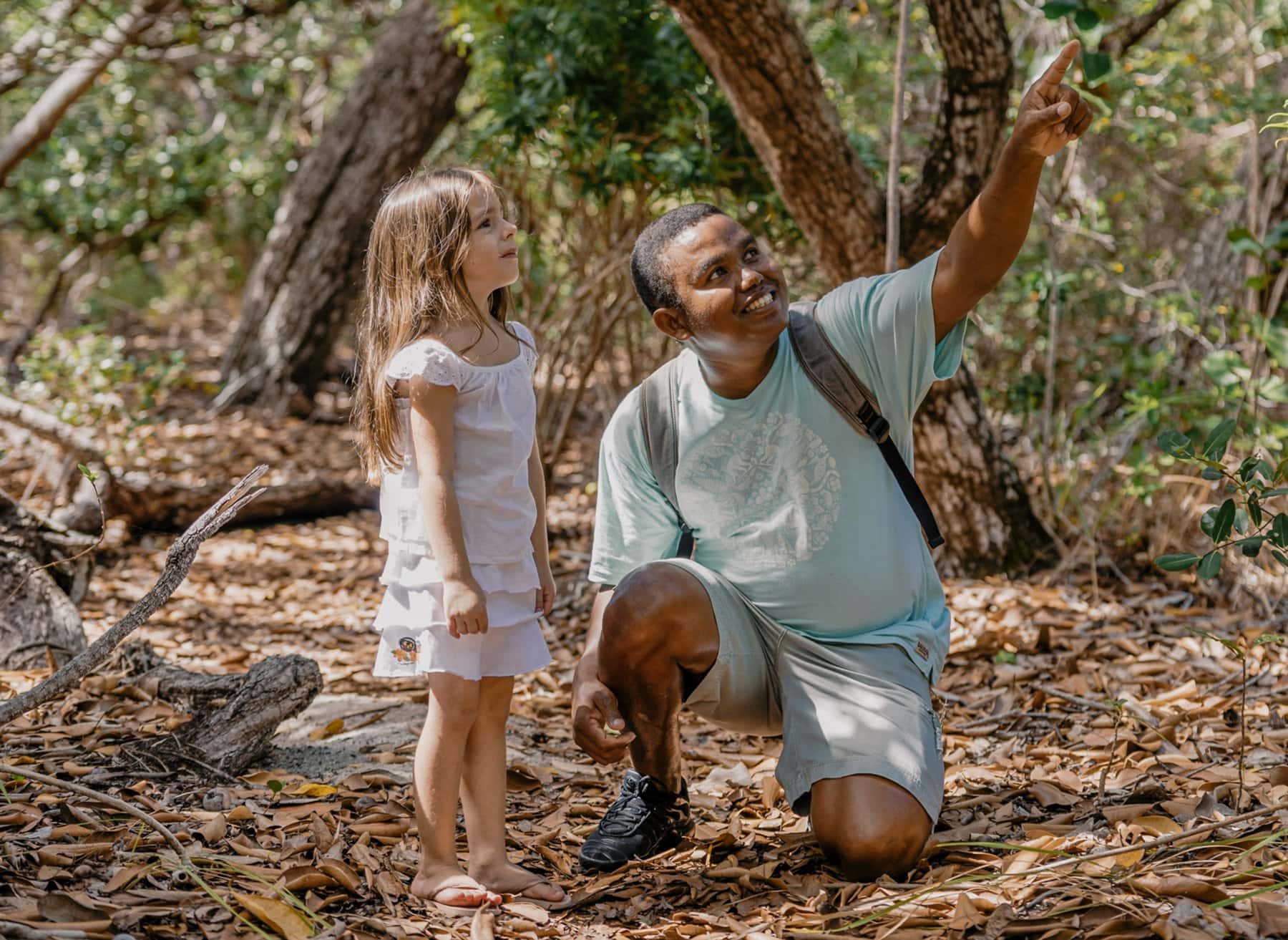
Distinctive appearance
Crowned Lemurs are easily recognizable by their striking colouration and, as their name suggests, the crown-like tuft of fur on their heads. The combination of rich orange and brown hues in their fur allows them to seamlessly blend into the forested environment, while their unique crown sets them apart from other lemur species.
Social structure
Matriarchal Groups: Crowned Lemurs live in small family groups that are typically led by a dominant female, often referred to as the matriarch. The dominant female holds a central role in the group’s dynamics, influencing decisions related to foraging, movement, and interactions with other groups.
Cooperative Care: One of the most remarkable features of the Crowned Lemur social structure is cooperative caregiving behaviour. Males actively participate in the care of offspring, a rare occurrence among primates. Males are known to carry and groom the young, provide protection, and even share food with them.
Territorial Behavior: Family groups of Crowned Lemurs exhibit territorial behaviour, defending their designated areas against other groups. These territories are essential for accessing resources like food and shelter. Vocalizations, scent-marking, and visual displays are used to communicate territorial boundaries.
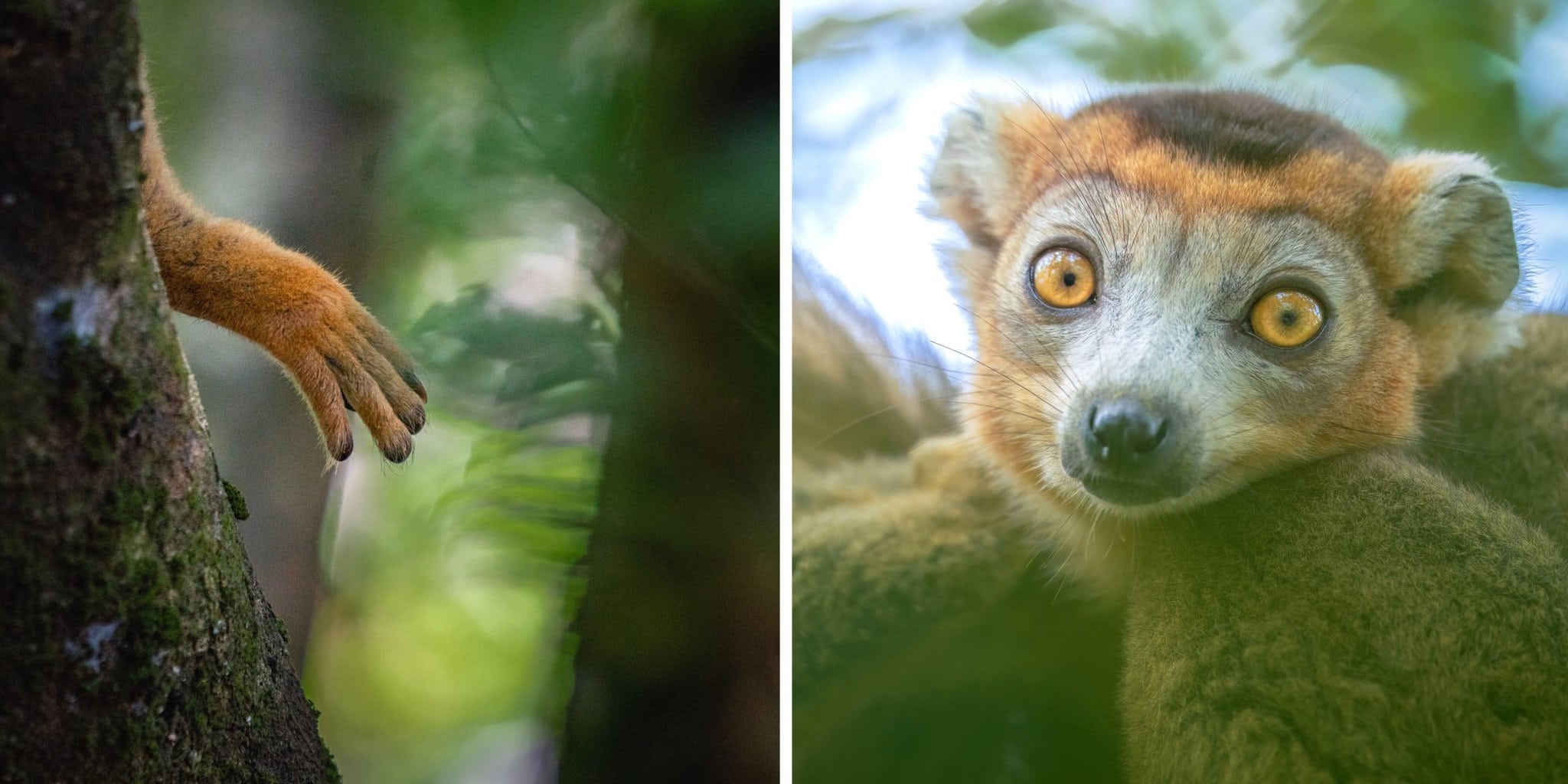
Behavioural aspects
Communication: Crowned Lemurs use a variety of vocalizations to communicate with one another. These include calls that convey information about danger, food availability, and group cohesion. Their vocal repertoire includes contact calls, alarm calls, and even loud, long calls that can be heard over significant distances.
Foraging Patterns: Crowned Lemurs are primarily diurnal, meaning they are active during the day. They are known for their agile movements through the trees as they forage for various types of food, including fruits, leaves, flowers, and nectar. Their diet diversity reflects their adaptability to the forest environment.
Grooming and Bonding: Grooming is an important social behaviour among Crowned Lemurs. It not only helps them maintain their fur but also strengthens social bonds within the group.
Reproductive Behavior: Breeding in Crowned Lemurs is seasonal, with a peak during the austral summer. During this time, females signal their receptivity to males through behavioural cues and scent marking. After a gestation period of about 125 to 135 days, a single offspring (rarely twins) is born.
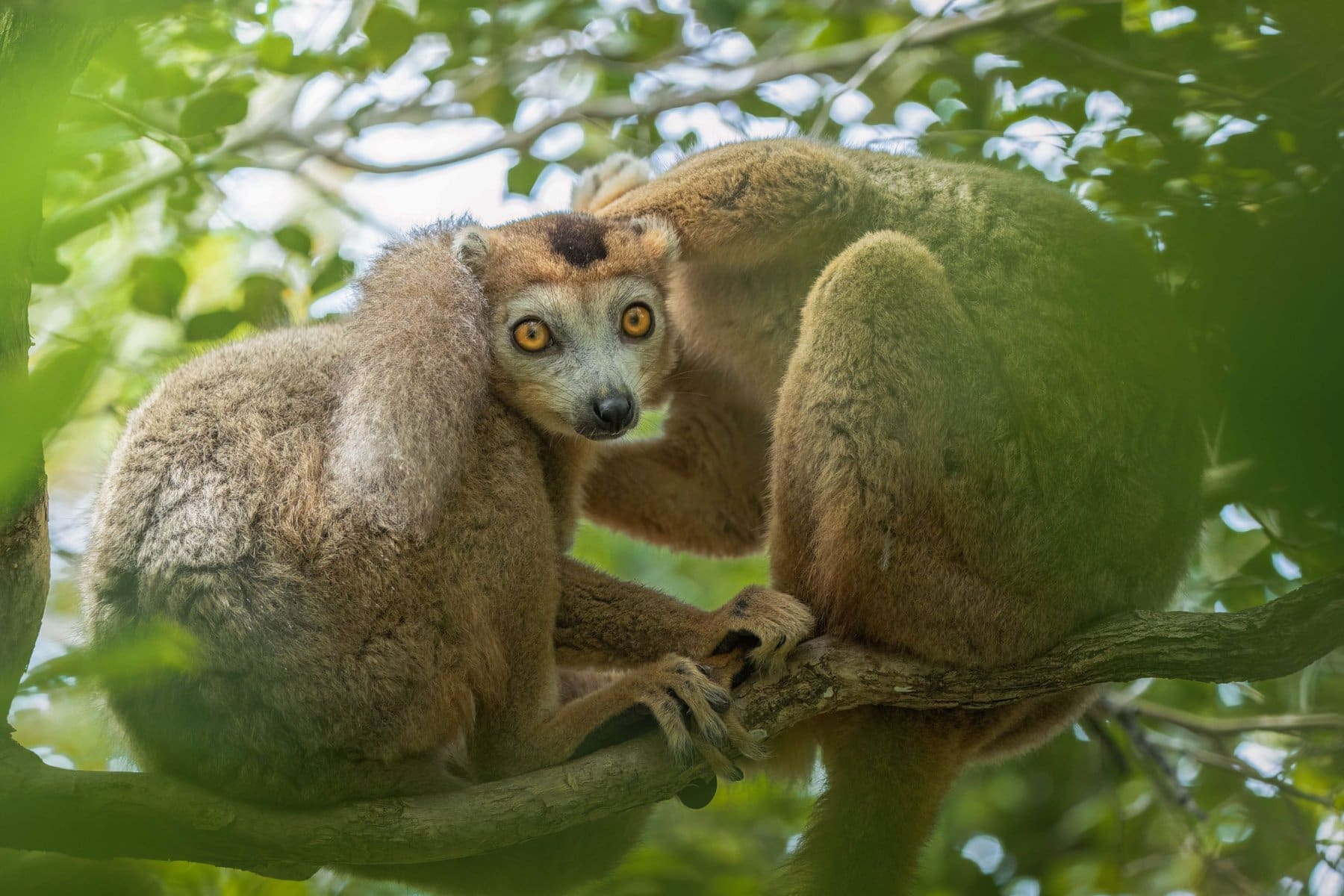
Ecological importance + diet
The Crowned Lemurs’ diet consists of a diverse range of foods, reflecting their role as omnivores and their adaptation to their forested habitat. By foraging on the below, Crowned Lemurs act as seed dispersers and pollinators of the ecosystem in which they inhabit:
-
Fruits: Fruits make up a significant portion of a Crowned Lemur’s diet. They feed on various types of fruits, including ripe and unripe ones. Fruits provide essential vitamins, minerals, and sugars that offer energy for their active lifestyle.
-
Leaves: Leaves are another important component of their diet. They consume young leaves as well as more mature foliage. While leaves might not be as nutritionally dense as fruits, they still offer essential nutrients and serve as a supplemental food source.
-
Flowers: Crowned Lemurs also eat flowers, which can provide nectar and pollen as well as additional nutrients. Flowers can be an important source of energy and certain micronutrients.
-
Nectar: Nectar from flowers is consumed for its sugary content. It’s a quick and easily digestible source of energy, particularly important for their active behaviour.
-
Insects and Small Prey: While not a primary part of their diet, crowned Lemurs may occasionally consume insects and other small invertebrates.
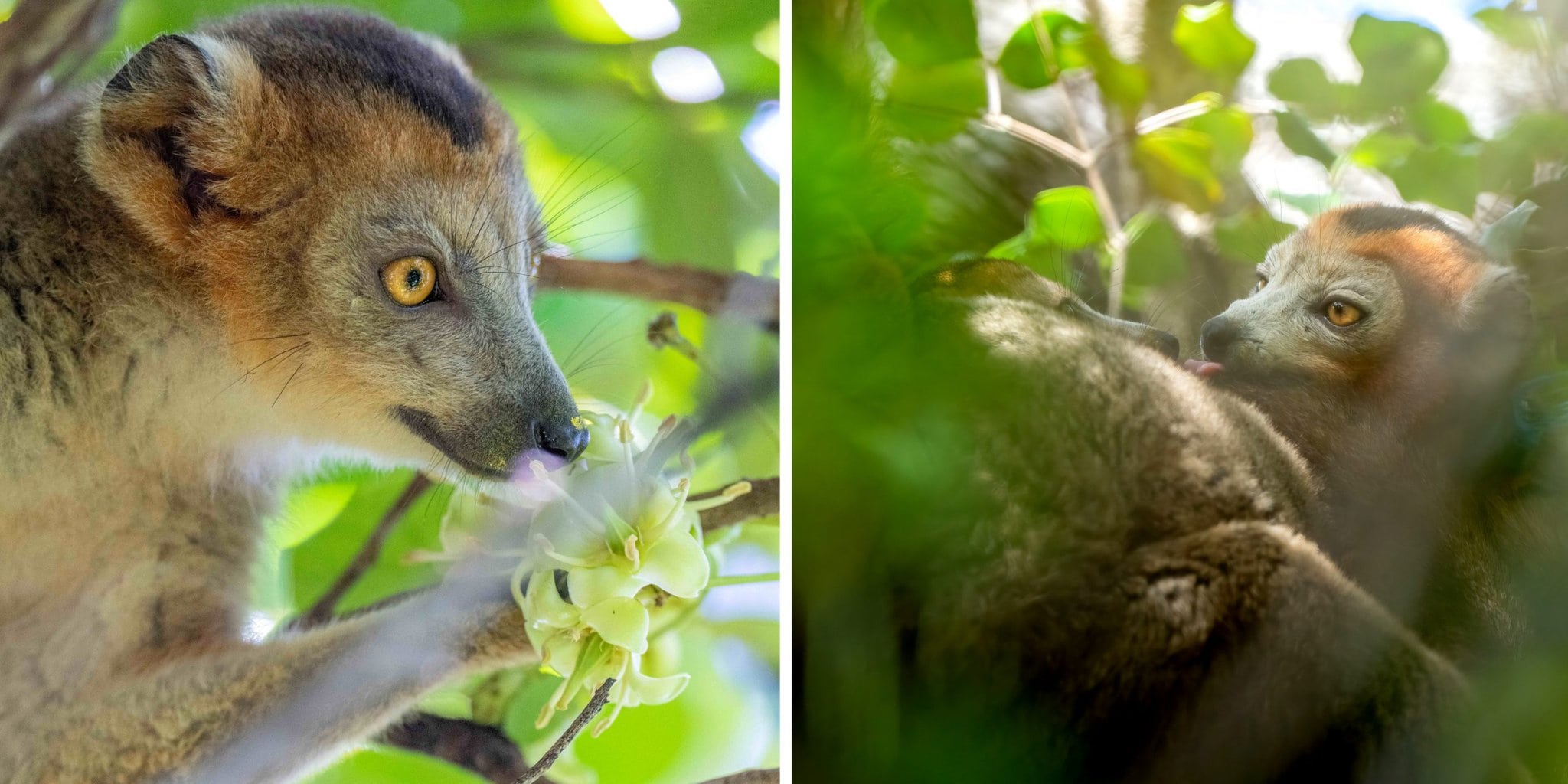
Come let us show you …
Book your own island adventure with us
travel@timeandtideafrica.com
We look forward to sharing this exceptional island with you
